Grandville Landsdell
The Cartoon in the Fine Arts
Watching the creation of fine art for nearly 80 years, one of the most fascinating aspects is the process. From idea to gallery, every artist has an individualized system that is practiced as if it were a religion. And even more interesting is how similar the routine is when an artist changes his medium. But there is one step – in every regimen – that is most entertaining – the cartoon.
In the fine arts, the cartoon is a full-sized preliminary drawing for a work to be executed in fresco, oil, mosaic, stained glass, or tapestry.
The finished piece of art is seldom identical to its cartoon. Making changes in a piece of art is analogous to changing an adjective in the description of a noun. I was lucky to recognize the dualism early in life and was able to substitute the work I could do with a high degree of skill for the work I wanted to do but had no talent. Writing is an art form in itself and it needs nearly as much training and practice as art.
From an examination of the postcards featured in this article, it is easy to comment: “The artist knew what he was doing and did it well.”
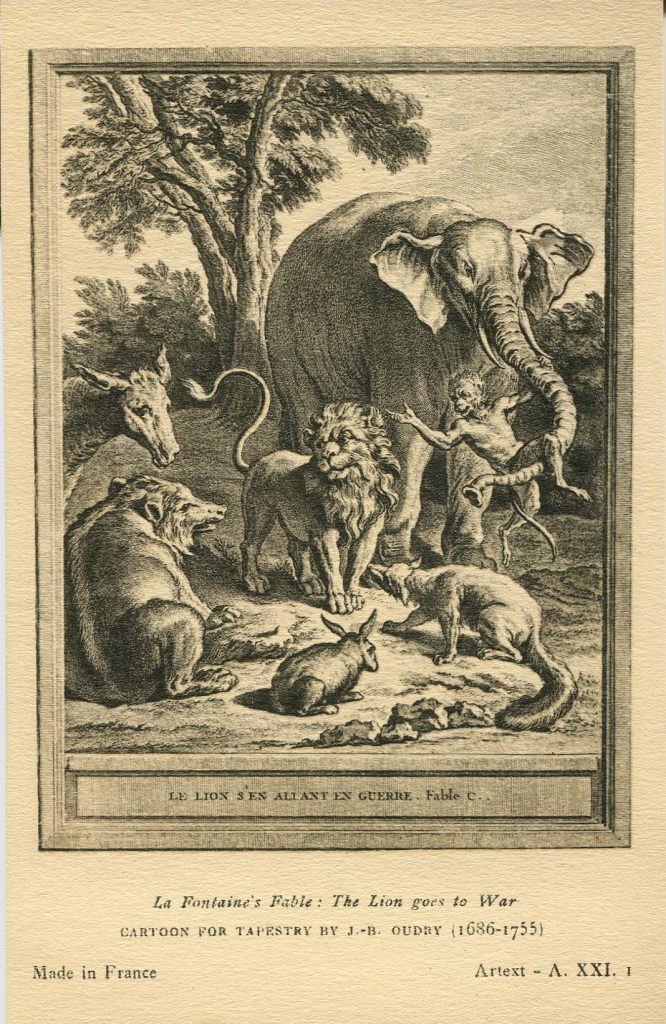
The Lion Goes to War
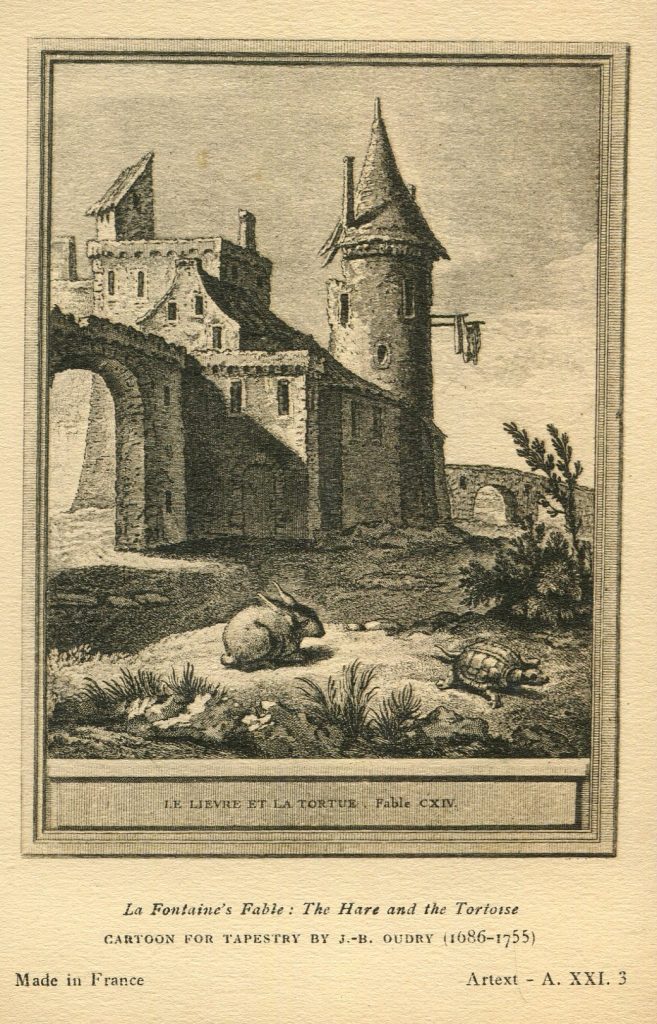
The Hare and the Tortoise
The lion at war fable starts when one day the King of the Forest called a meeting of the animals. He told them that each of them must have a responsibility. The elephant was to carry the weapons, the bear was told he had to rush the enemy, the fox had to learn the enemy’s secrets, and the monkey was to learn how to amuse their foe and divert their attention from battle. As each waited for his assignment, one of them asked, “What use are the Ass and the Hare? They are too cowardly to fight. Send them home.”
“No,” said the King, “everyone has a part to play. Without their help we would be incomplete. The Ass shall be our trumpeter, to scare our enemy. And then the lively Hare will carry home the report of our victory.”
The details: the Art. A tapestry is a textile (cloth, thread, and needle) art form that tells a story much in the same way that a painting does. The majority of all tapestries are made using looms. The ancient adage – a picture is worth a thousand words – is most relevant when viewing a tapestry.
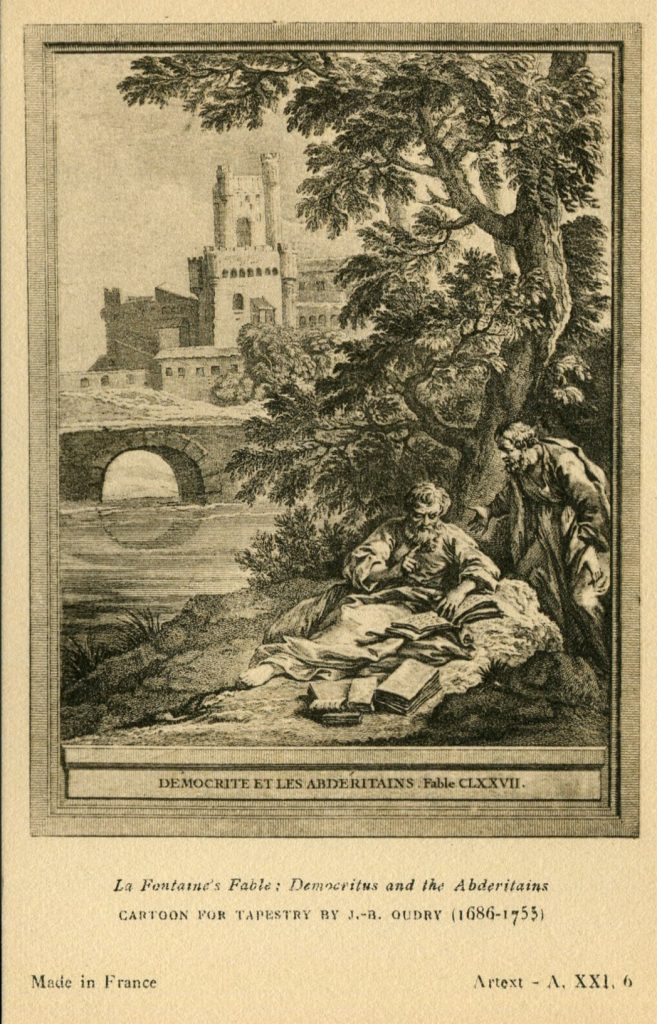
Democritus and the Abderitains
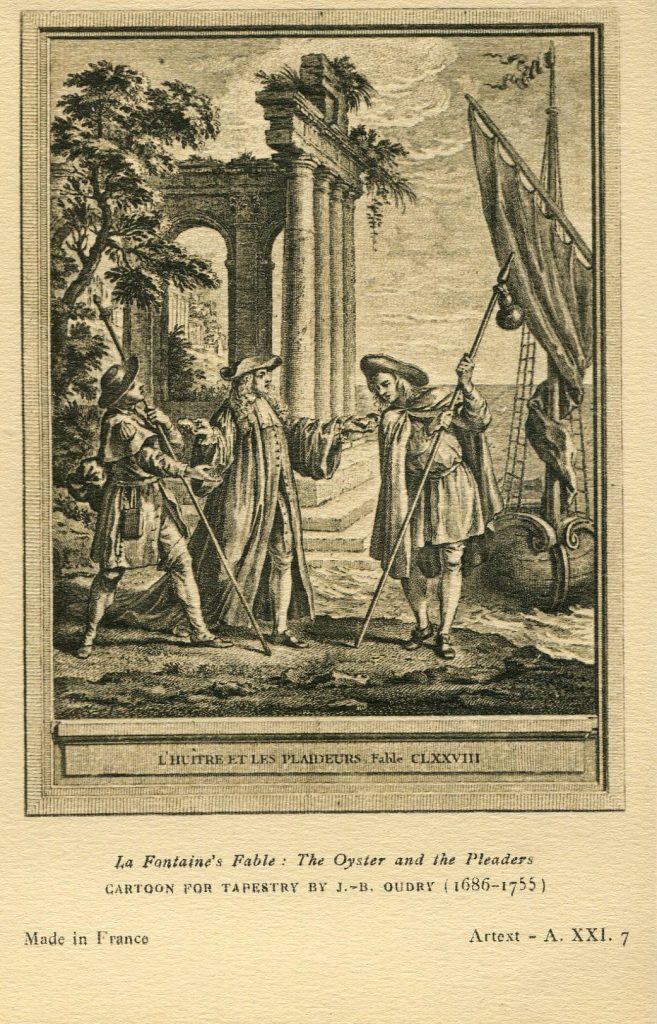
The Oyster and the Pleaders
“But I saw it first,” said the man who saw it first.
“Perhaps so, but I smelled it first,” said the other.
During this lively exchange a Justice came upon them, and to him they appealed their claims. The justice very gravely took the oyster, opened it, and put it into his mouth, whilst the two claimants looked on. Having deliberately swallowed the oyster, the justice, in the portentous tones of a justice, said, “The court here awards each of you a shell, without costs. Let each go home peaceably.”
The Artist. Jean-Baptiste Oudry is forgotten today by all except those who have studied tapestry art and history. Oudry was born at the end of the 17th century and lived in Paris until his death in April 1755. His father, Jacques was for many years the director of the Saint Luke Art Academy, which in many ways enhanced Jean-Baptiste’s widespread reputation. His life’s work is easily dated into three distinct periods: portraits, landscapes, and later (circa the early-1720s) as a tapestry designer and maker. His designs came to be some of the most iconic tapestry series of the period: first the La Fontaine’s Fables and later the Pastoral Amusements.
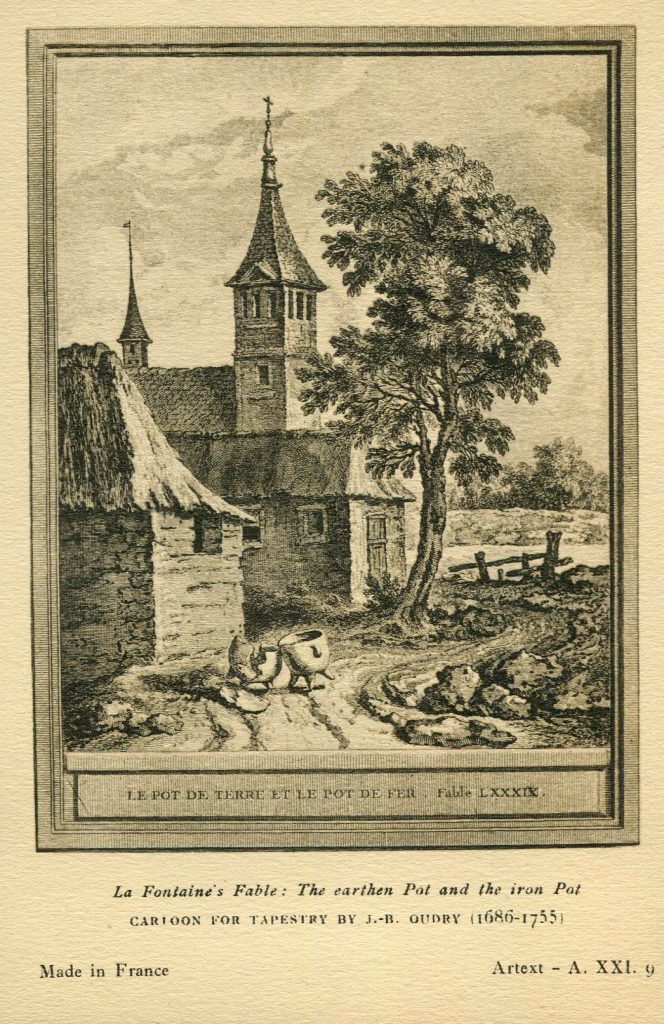
The Earthen Pot and the Iron Pot
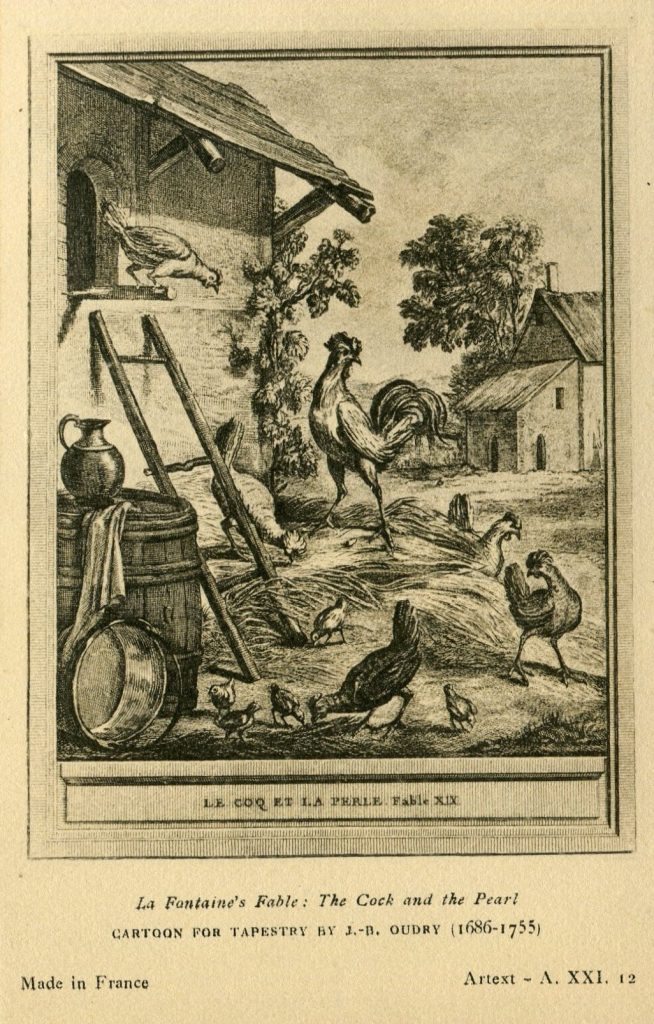
The Cock and the Pearl
The fable of the earthen pot and iron pot tells the tale of two pots on the same journey. The metal pot is happy that the two may journey together, but the “clay” pot is reluctant and wishes to keep a distance between them. The earthen pot’s logic is simple, if they should crash into each other, the earthen pot will be the “only” victim.
The fable of the cock and the pearl all began in a barnyard. On a bright and sunny morning, the cock is going about his business of being a rooster when he sees a shiny object in the straw. When he had it rooted-out, it turned out to be a pearl that by some chance was lost in the yard. In a display of total disgust, the rooster told the pearl that men may think you valuable, but I would rather have a single kernel of corn than a basket of pearls.”
What do you think readers, for we who collect postcards it’s like finding a “Hold-to-Light” in a box full of chromes!
This set of twelve cards is a museum quality set showing Oudry’s Cartoons. In their day these cartoons were among the most frequently examined and admired of any Rococo artist. These cartoons are the ones used in the creation of the La Fontaine’s Fable tapestry series, some of which still exist today, as in the Louvre and in the Getty Museum. Jean de La Fontaine was a French fabulist who collected from a wide realm of societies in the East and West. He was the most read French poet of the 17th century.
Quality Art has always drawn me to look at postcards. Great story and lovely cards!
I am simple amazed at the range of concepts the “lowly postcard” far overcomes. They are like a visual encyclopedia of our world
I have learned more about the history of postcards, along with discovery of new genres on this website than anywhere else I can think of. Thank you.